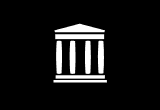
NASA Technical Reports Server (NTRS) 20160001284: KSC Weather and Research PDF
Preview NASA Technical Reports Server (NTRS) 20160001284: KSC Weather and Research
NASA Kennedy Space Center Launa Maier Dr. Lisa Huddleston Kris3n Smith January 27, 2016 Ar0st rendering of SLS soaring through clouds Agenda J. F. Kennedy Space Center • Background • Past Research • KSC Weather Today, Staff, Responsibili>es, Ac>vi>es • Evolu>on of Weather Support • Future Technology • Buoy Update • Summary Background J. F. Kennedy Space Center • Prior and during Apollo, the Weather Bureau (later named the Na>onal Weather Service) provided meteorological support for Kennedy Space Center (KSC) and had offices at Johnson Space Center (JSC), Miami, Honolulu and Washington D.C. • During this >me, the USAF provided some meteorological services including rawinsondes, weather radar, surface-based instruments and a network of wind towers for diffusion of toxic/ nuclear materials. (ref. KCA-1645 Webb-McNamara Agreement) • Post Apollo, KSC elected to use the USAF for weather support and JSC con>nued to use the Na>onal Weather Service. • The Lightning Advisory Panel (LAP) was formed following inves>ga>on of triggered lightning event on launch (AC-67) to provide rules and associated technical ra>onale for launch constraints to preclude triggered lightning during launch. • Weather Office formed about the same >me, based upon recommenda>on of the inves>ga>on board. • The Weather Support Office (WSO) was formed at NASA HQ about the same >me. Subsequently, (late 90s) this responsibility was delegated to John Madura at KSC and the WSO was eliminated. • Shortly therea^er, the Applied Meteorology Unit was formed based upon recommenda>ons from NASA-sponsored panel to develop and apply new measurement technology as well as new weather analysis and fore-cas>ng techniques to improve weather support for space opera>ons. 1/27/2016 3 Thunderstorm Research Interna3onal Program (TRIP) J. F. Kennedy Space Center • South Dakota School of Mines T-28 (1978) • GSFC (LeVine) • NASA-6 Airborne Field Mill • Stanford Research Ins>tute (Nanevicz) • New Mexico Tech Rain Gauges (Brook) • Statue University of New York at Albany (Orville and Idone) • Environmental Research Laboratory C-131 (Kasemir) • Pennsylvania State University (Panofsky) • Kennedy Space Center NASA-6 (Taiani) • Na>onal Severe Storms Laboratory (Rust and Taylor) • Naval Research Laboratories S2D (Ruhnke) • USAF 1035th Technical Opera>ons Group • University of Arizona (Krider) (Turman) • Rice University (Few) • University of Florida (Uman) • Transporta>on Systems Center (Kalafus) • KSC (Lennon, Poehler, Stubbs, PRC/ • AF Flight Dynamics Laboratory (Baum) Stahmann) • JSC (Arabian) 1976-77 TRIP report hgp://ntrs.nasa.gov/archive/nasa/casi.ntrs.nasa.gov/19780003695.pdf 1976 Flight Data hgps://archive.org/stream/nasa_techdoc_19780025750/19780025750#page/n179/mode/2up 1/27/2016 4 Results from TRIP J. F. Kennedy Space Center Flash that occurred at 2024:50 UT, 7/29/78, KSC, Florida from Orville and Idone, JGR, 1982 S>ll Photo Lightning Veloci3es Moving Film elements Stepped 2x105 leaders Dart- 1-2x106 stepped leaders Dart leaders 1-2x107 Return 2x107 - 2.8x108 Strokes IX Interna>onal Symposium on Lightning Protec>on, Rakov, 2007 1/27/2016 5 Loca3ng Lightning and Thunderstorm Currents with Electric Field Mills J. F. Kennedy Space Center 7/11/1978 7/19/1976 Al>tudes of charges The Electric Currents deposited by cloud-to-ground Produced by Thunderstorms, lightning and use of dipoles Krider and Blakeslee, J. to locate intracloud lightning, Electrosta>cs, 1985 Maier and Krider, JGR, 1986 1/27/2016 6 Rocket-Triggered Lightning J. F. Kennedy Space Center • NASA hosted the Rocket- triggered lightning program from 1984-1991 • Repeatedly triggered lightning at a known loca>on to measure lightning characteris>cs • Researchers from France, Florida, New York, Arizona and more par>cipated in characterizing the currents, veloci>es, spectrums, etc. of triggered lightning 1/27/2016 7 Lightning Protec3on Systems J. F. Kennedy Space Center • Numerous systems are employed to protect sensi>ve hardware from lightning effects • These systems have also been used to study the characteris>cs of lightning; e.g., frequency of occurrence, return strokes, currents, induced currents, and more • Systems used include catenary wire system, lightning towers, internal electric measurements to quan>fy induced voltages, electric and magne>c field measurements and more 1/27/2016 8 Convec3on and Precipita3on Experiment (CaPE) J. F. Kennedy Space Center • The Convec>on and Precipita>on/Electrifica>on Experiment (CaPE) • 7/18-8/18, 1991 • Par>cipants included NSF, FAA, NASA, NOAA, USAF • Main Objec>ves: 1) Rela>onship between wind, water and electric fields in convec>ve clouds; 2) Mesoscale model forecasts of wind, cloud and thunderstorms; 3) Improving nowcas>ng of convec>on, downbursts and tornadoes; 4) precipita>on par>cle characteriza>on and es>ma>on of rainfall Example Experiment: The Advanced Microwave Precipita3on Radiometer The AMPR is a total power passive microwave radiometer producing calibrated brightness temperatures (TB) at 10.7, 19.35, 37.1, and 85.5 GHz. These frequencies are sensi>ve to the emission and scagering of precipita>on-size ice, liquid water, and water vapor. 1/27/2016 9 Airborne Field Mill Campaigns J. F. Kennedy Space Center Airborne Field Mill II (6/2000, 2/2001, 5-6/2001) • KSC, MSFC, USAF, NCAR, Univ of N Dakota, NHL and NOAA Envir. Tech Lab • Studied the electric field in anvil and debris clouds Airborne Field Mill I (2000-2001) • NASA (HQ, KSC, MSFC, LaRC), USAF, SRI, Aerojet • Studied the electric field above growing cumulus and inside various cloud types Purpose: To iden>fy, by measurable parameters, which clouds have sufficient electric field to trigger lightning during launch. 12/8/2015 10
